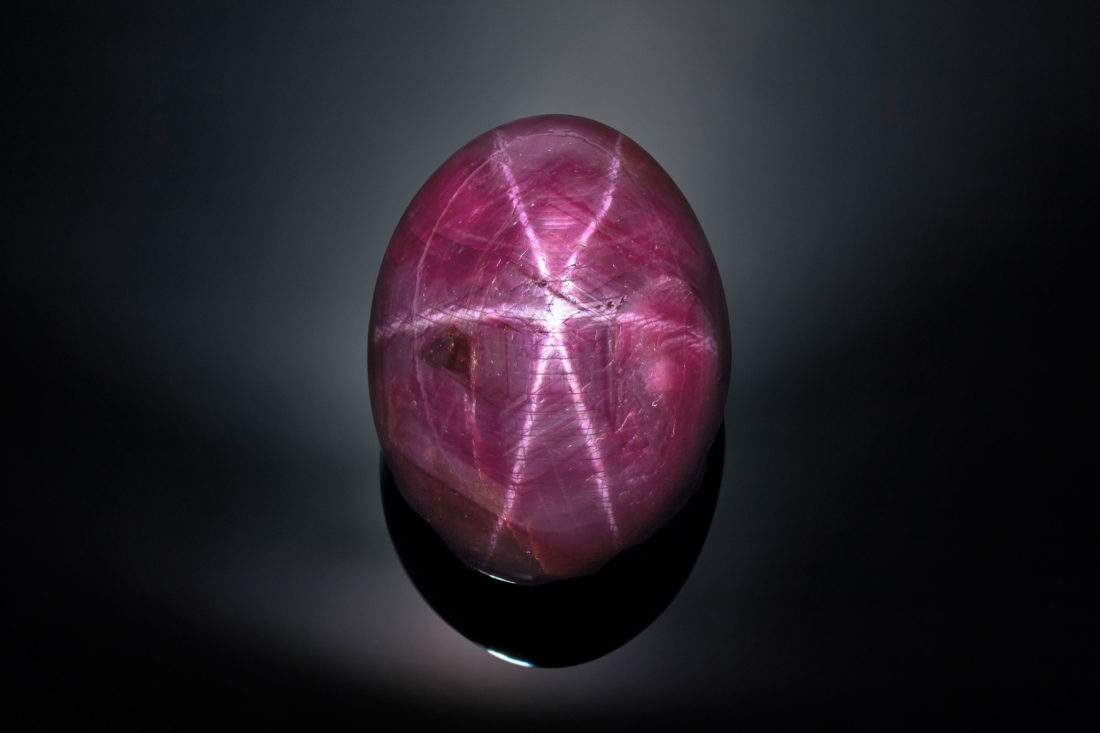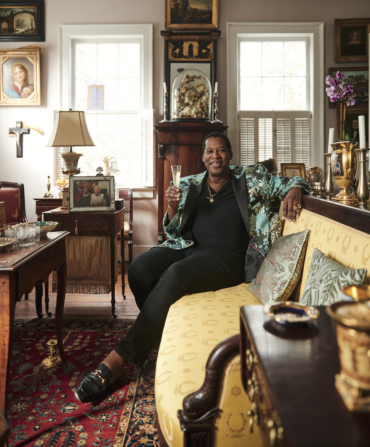From Blackbeard’s booty to stockpiles of forgotten Confederate currency, the South has procured many a legend about hidden Southern treasures—and what happens when they’re found. In 1990 in the woods outside of Asheville, North Carolina, Jarvis Wayne Messer, a local fishing guide and self-proclaimed “rock hound,” trumped the lore with a find worth upwards of $90 million: the largest and most unique set of star rubies in existence, now up for auction.
Messer was a man of simple means living with his wife and young son in Buncombe County, North Carolina, when he discovered trace elements of corundum during a fishing trip near his home—in an exact location he chose never to disclose. “He’d often see something in a stream bed that drew his attention, and he’d trace it back to some origin and dig down into the ground to follow the trail,” says Arlan Ettinger, founder and president of Guernsey’s, the New York City-based auction house now responsible for the sale of the rubies. “For this particular find, he had to dig about eight feet down.” From first sighting to protraction of the rubies, the discovery took three years.

Photo: Courtesy of PBS
Messer in an interview with North Carolina Now in the early 1990s.
“When I found it, there was a red-tailed hawk that soared right over me,” Messer told local talk show North Carolina Now in an early 1990s interview. “I knew it was something special, but I didn’t realize how important the stones would be.”
When a friend cut and polished them, it became obvious that they were star rubies, pigeon’s blood-red gems with six radiating lines that refract light in the shape of a star. While rubies are already rarer than diamonds, star rubies are roughly a thousand times rarer than regular rubies.
“Messer was educated enough to know that you typically don’t find this kind of thing in North Carolina, or even the United States for that matter,” Ettinger says. “Before this, star rubies had only been found in Southeast Asia—Sri Lanka, Burma—but not western North Carolina.”

Photo: Courtesy of Guernsey's
The Appalachian Star.
Before Messer’s discovery, the finest star ruby in the world, the “Rosser Reeves,” sat in the Smithsonian at 138 carats, with only five perfect rays. The largest of Messer’s find, the “Appalachian Star” weighs in at just over 139 carats and has all of its rays intact. “The Promise Star,” “The Misty Star,” and “The Smoky Mountain Two Star,” the three other rubies in what was dubbed “The Mountain Star Collection,” are identical in color and pattern, with one even displaying a double star on both front and back.
After friends and neighbors of the Messers raised funds to send the stones to the Gemological Institute of America in New York City to be tested and certified, the Natural History Museum in London invited Messer to display the “Appalachian Star” for thirty days, during which time an estimated 150,000 guests filed through the museum to see the gem.
Although many attempts to sell the stones were made over the next decade, the rubies remained in Messer’s possession. (Eight and nine-figure appraisals for the entire collection shrink the potential buyer pool.) When he died in 2008 after a long battle with cancer, the rubies remained with the Messer family, mostly forgotten. “There’s the notion that these are worth many, many millions of dollars,” Ettinger says, “but the family is still living a very humble life.”
A recent appraisal revived interest in the rubies, and the same friends who raised money to test the stones more than twenty years ago contacted Guernsey’s auction house. Guernsey’s is known for its unusual sales, and many valuable artifacts have passed through its doors during its forty-three years of existence, including the contents of the SS United States ocean liner, possessions of John F. Kennedy’s and Elvis’s, and the complete collection of Rosa Parks’s belongings at the time of her death, which were bought and donated to the Library of Congress.
Although the rubies are nearly priceless, Guernsey’s has taken on the challenge of trying to sell them. “Our job now is to help Wayne’s widow,” Ettinger says. “She deserves to live comfortably.” The rubies are currently available for a privately negotiated sale before an official auction is scheduled, and no bid, Ettinger says, will be ruled out. Any takers?








